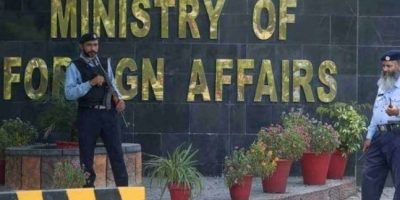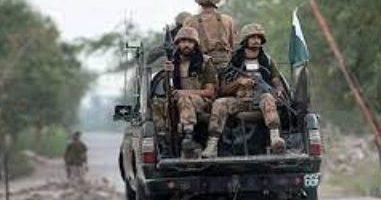Indian State Sponsored Terrorism in Sri Lanka

By Sajjad Shaukat
Historically, India has continued interventionist and hegemonic policies vis-à-vis her neighbouring countries through its military and intelligence agency RAW. Besides supporting separatism in East Pakistan which resulted in dismemberment of Pakistan and continued assistance to the separatist elements of Pakistan’s Balochistan province, New Delhi occupied Sikkim, subdued Bhutan. It particularly employed state sponsored terrorism which still continues in Sri Lanka.
After the then Prime Minister Indira Gandhi, took a policy decision to support Sri Lankan northern insurgency in August 1983, within years, the number of Tamil training camps increased in the Indian state of Tamil Nadu. Over 20,000 Sri Lankan Tamil insurgents had been imparted armed training—tactics of guerrilla warfare by the Indian Army. Specialised training was also imparted by the Indian army instructors to Sri Lankan militants in New Delhi, Bombay and other cities. Besides, its navy and air force also played their roguish role in connection with the Sri Lankan insurgents. By openly violating the maritime laws, Indian navy had supplied larger cache of arms and ammunition to the Tamil rebels. Despite the capture of some Indian ships, and despite the complaints of Colombo, the illegitimate practice continued by the Indian military.
In this context, Rohan Gunaratne in his book, “Sri Lanka Tamil Insurgency”, disclosed that with the Indo-Lanka Accord of July 1987, Rajiv Gandhi ordered the Indian Peace Keeping Force (IPKF) to fight the Liberation Tigers of Tamil Elam (LTTE). However, it was double game of New Delhi.
Sri Lanka which has crushed the Tamil rebels successfully, offers an unprecedented instance. But, Tamil Nadu still remains LTTE’s main source of weapon supplies. LTTE, the most ruthless terrorist organization of the world, fought against the State of Sri Lanka, killed thousands of civilians and military personnel, damaged state assets and bared economic growth of the country for about three decades. The outfil as launching pad for the insurgents’ activities included most deadly weapon “The Suicide Cadre” that introduced new trend in terrorism.
Today, LTTE is almost banned globally; however, in India, it has a temporary ban which is reviewed periodically.
Tamils who make almost 12% of the Sri Lankan population are mostly concentrated in north, collocated in proximity of Indian Tamil Nadu. Ethnic group in past, had armed conflict with the state duly supported by India and Tamil Diaspora to achieve separate state; nevertheless, after the military defeat, now only promote autonomy/merger of Northern and Eastern Province.
It is notable that Easter Sunday Bombing on April 21, 2019 rocked the entire Sri Lanka, as the suicide bombings killed more than 250 people by targeting three churches in and three luxury hotels in the capital, Colombo.
In this regard, Islamic State group (Also known as Daesh, ISIS and ISIL) claimed Easter Sunday’s suicide attacks in Sri Lanka.
In a statement, Sri Lankan President Maithripala Sirisena had said that the attacks “were the work of international drug dealers” to disrupt his anti-narcotics drive..
However, a happy nation could not believe that she has to suffer another wave of terrorism. Unfortunately, like LTTE which originated from Tamil Nadu; NTJ whose members under the influence of ISIS ideology carried out the bombings also belonged to the same state of India, having its headquarters at Channai.
It is mentionable that Indian State of Kerela, which is almost a neighboring geo entity to Sri Lanka, is one of the leading source of ISIS influx and drugs in Sri Lanka. Tons of cannabis and other drugs are sent to Sri Lanka through sea.
Sri Lanka is a beautiful island and her serene beaches, astounding sea life, wild life and nature attracts tourists’ from various parts of the world. While, fishing is one of the leading sources of sustenance for the people mostly living on the coastline.
Palk Strait which divides Jaffna Peninsula from mainland India remains a contested place despite clear demarcation of international maritime boundaries between both the countries. Poaching and illegal fishing by Indian fishermen into Sri Lankan waters is not only depleting the sustenance of poor Sri Lankans but also seriously affecting the marine environment which can ultimately affect the tourism industry of Sri Lanka, leading to huge economic losses.
It is noteworthy that New Delhi is trying thwart cordial relations of Sri Lanka with China.
In this respect, on April 27, 2017, on a website, LiveMintCom, Elizabeth Roche under the caption, “India renews Sri Lanka ties to counter China influence in South Asia” wrote: “India moved to cement closer economic ties with Sri Lanka in a bid to negate the growing influence of strategic rival China in the Indian Ocean region and South Asia. A pact on economic cooperation was signed in the presence of visiting Sri Lankan Prime Minister Ranil Wikremesinghe and his host Prime Minister Narendra Modi.”
Similarly, Indian media and websites gave much coverage to an article, published by a German TV Channel (Which also publishes online news items) under the title “India Nips at China’s Heels in Race to Collect Lanka Port Assets written by Iain Marlow and Saket Sundria on April 26, 2017. They wrote: “India is looking to invest in a colonial-era Sri Lankan oil-storage facility as it seeks to further its naval interests in the Indian Ocean and push China back in the process. A unit of state-owned Indian Oil Corp., the country’s largest refiner, is set to help fund the $350 million development of an 84-tank facility at the strategically located Trincomalee port on Sri Lanka’s east coast. India and Sri Lanka are also discussing setting up a refinery in the island nation, according to Shyam Bohra, managing director of Indian Oil’s subsidiary Lanka IOC. The talks come before a meeting between Indian Prime Minister Narendra Modi and Sri Lankan Prime Minister Ranil Wickremesinghe in New Delhi.”
It is of particular attention that during his visit to New Delhi on February 8, this year, Indian Premier Modi urged the visiting Sri Lankan Prime Minister Mahinda Rajapaksa to empower the minority Tamil community in the island nation and fulfill their aspirations for justice, respect, and equality. Modi said at a joint press briefing.
Rajapaksa’s visit to India was being closely watched by foreign policy analysts, as during his term as president between 2005 and 2016, Colombo grew closer to Beijing.
Nonetheless, Indian neighbouring countries now look ahead for the peace and development in the region and do not deserve to be suppressed with such kind of traditional heinous designs of New Delhi. Let’s walk on a track where all the regional countries are considered equal and sovereign for the betterment of human kind; India on this chess board of South Asian place has a major role to play.
Related News

Pakistan issues demarche to Taliban regime after Afghan soil used to martyr soldiers
ISLAMABAD, DEC 19: The Foreign Office (FO) on Friday issued a demarche to the AfghanRead More

Security forces foil major suicide attack on North Waziristan Camp
RAWALPINDI, DEC 19: /DNA/ – In a heinous and cowardly terrorist act, Khwarij belonging toRead More


Comments are Closed